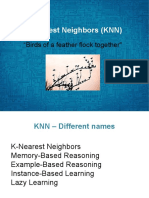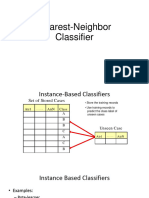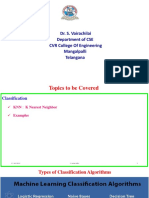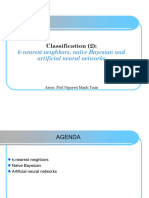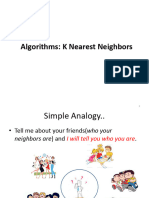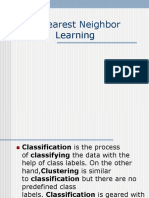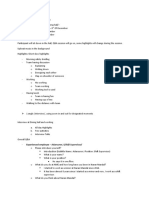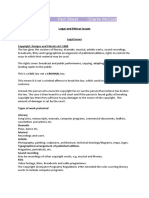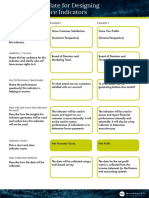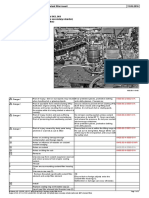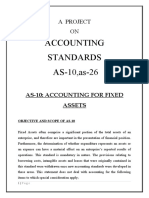0% found this document useful (0 votes)
27 views18 pagesLecture-11-KNearest Clustering-Part-1
The document provides an overview of the K Nearest Neighbor (KNN) classification algorithm, highlighting its simplicity, non-parametric nature, and lazy learning approach. It explains the classification process, including training, testing, and usage phases, as well as the importance of distance calculations and normalization of features. Additionally, it discusses practical applications of KNN, such as using Voronoi diagrams for optimal location selection.
Uploaded by
pateljil0247Copyright
© © All Rights Reserved
We take content rights seriously. If you suspect this is your content, claim it here.
Available Formats
Download as PDF, TXT or read online on Scribd
0% found this document useful (0 votes)
27 views18 pagesLecture-11-KNearest Clustering-Part-1
The document provides an overview of the K Nearest Neighbor (KNN) classification algorithm, highlighting its simplicity, non-parametric nature, and lazy learning approach. It explains the classification process, including training, testing, and usage phases, as well as the importance of distance calculations and normalization of features. Additionally, it discusses practical applications of KNN, such as using Voronoi diagrams for optimal location selection.
Uploaded by
pateljil0247Copyright
© © All Rights Reserved
We take content rights seriously. If you suspect this is your content, claim it here.
Available Formats
Download as PDF, TXT or read online on Scribd
/ 18






